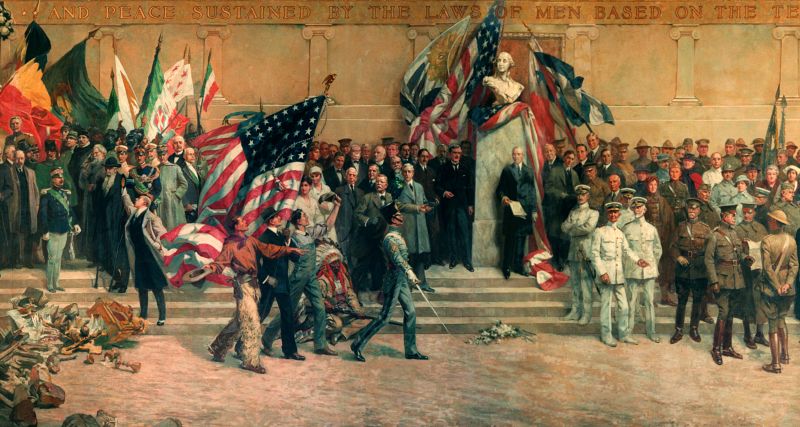The Journey of the ‘Pantheon de la Guerre’
The ‘Pantheon de la Guerre’ is a significant cycloramic painting that was created by two French artists and exhibited in Paris until 1928. This magnificent artwork spans an impressive 402 feet in circumference and tells the story of World War I through its vivid imagery. However, its journey did not end in Paris.
Exhibition and Public Reception
In 1928, the painting was purchased by American businessmen and moved to New York for exhibition at Madison Square Garden. This move generated immense public interest, drawing in one million visitors in just eight weeks. The section of the artwork displaying British Red Cross nurses captured the hearts of many.
Storage Challenges
After its successful US tour, which concluded in 1940, the painting faced significant challenges. Due to its size, it was sent back to a storage company in Baltimore. Unfortunately, it was stored outside in a 55-foot crate, leading to deterioration, as shown in fragments that highlight British military personnel.
A New Home in Kansas City
In 1957, the painting found a new home when it was donated to the Liberty Memorial in Kansas City, Missouri. This transition marked a pivotal moment in the artwork’s journey, as it continued to be preserved and appreciated for its historical relevance.
Restoration and Adaptation
To adapt the panoramic artwork for display in the Memory Hall of the National WWI Museum and Memorial, artist Daniel MacMorris undertook the restoration project. The final adapted piece measures 70 feet wide and represents only 7 percent of the original ‘Pantheon de la Guerre,’ showcasing a remarkably preserved fragment of history.
Conclusion
The ‘Pantheon de la Guerre’ remains a testament to resilience, art, and the impact of historical events on culture. It continues to be an integral component of the narrative of World War I, offering visitors a glimpse into the past while preserving the memory of those who lived through that tumultuous time.
For further details on the painting’s history and its significance, you may want to visit relevant historical resources.











